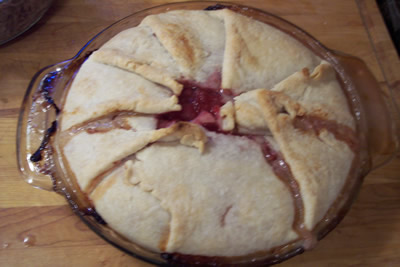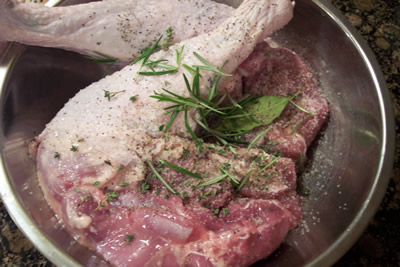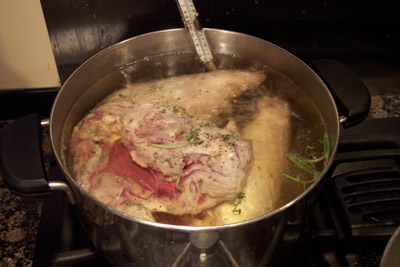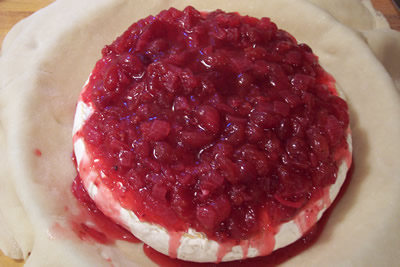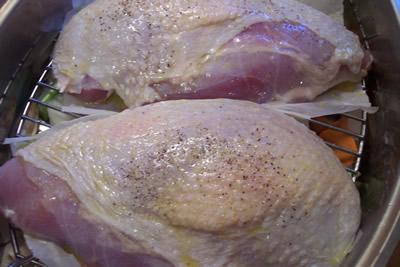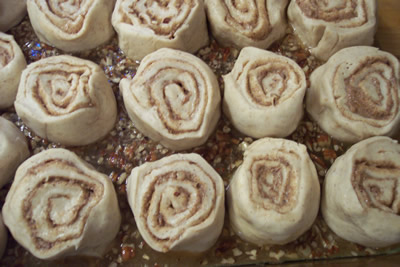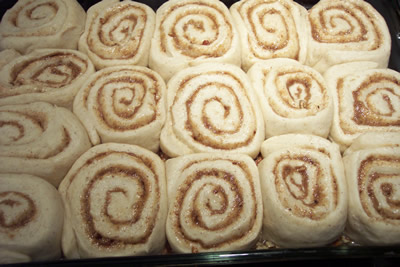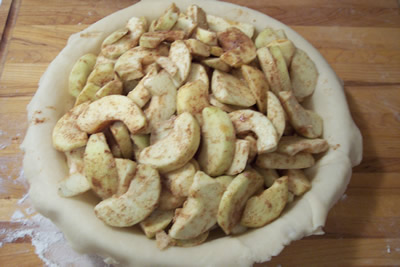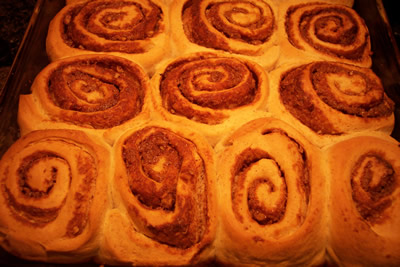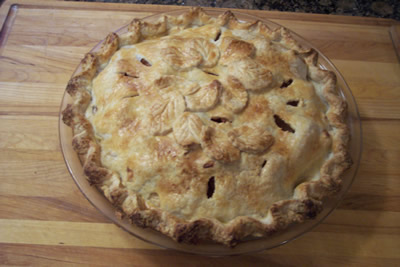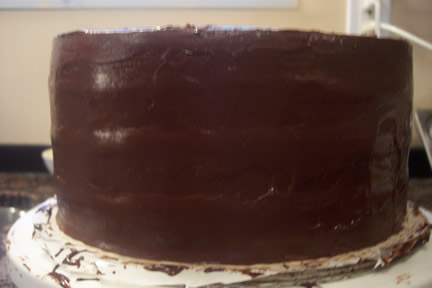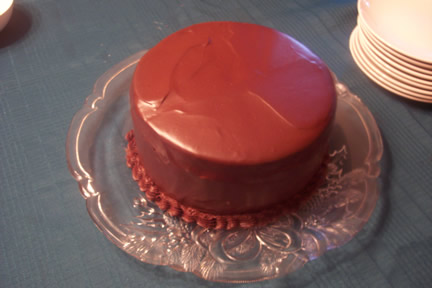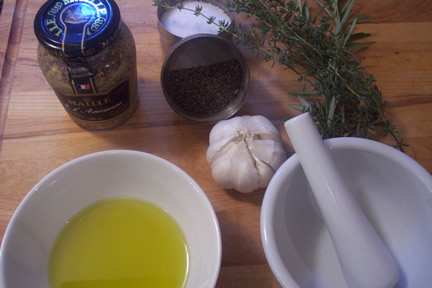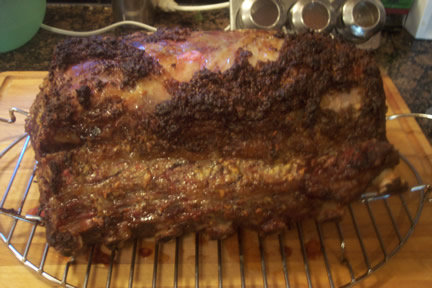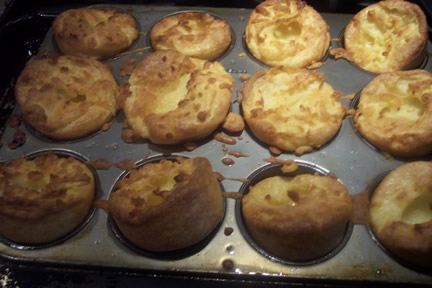In the 20 years since I first picked up a saute pan as a way to earn a living, there have been two occasions on which I have not had to work on the night of December 31, the first being 1994 when I was the Pastry Chef at Bishop’s, hence a daytime shift, and the second 1999, as we were closed for the Millennium. And then there was this year, and the first occasion that really felt like a night to enjoy the evening for what it is, an evening marking change, new beginnings, or whatever you want to think of it, but a fine night for a fine meal for certain.
I had the fortunate circumstance of the calendar on my side, having the weekend to decide to cook a nice dinner, and the time to prep, with only a half day to work in the office Monday morning. My wife and I had decided that we should invite some good friends over in an impromptu fashion, and I set about for Sunday to plan the meal. I had just cooked quite a fantastic dinner/class for a birthday dinner for some clients two weeks earlier, and two dishes from that meal stood out as possibilities: a hotpot with seafood, and smoked salmon with potato crepes, both having appeared in various incarnations in my restaurant repertoire, but new versions of which I had been thinking about.
For a main course, I had decided that beef tenderloin with mushroom ragout and potato puree, always a classic for a fine dinner, would be in order, and for dessert, I had some dark chocolate left in the cupboard from Christmas baking, so I figured I’d make a ganache tart of some description. I was sure another course would find me at the market, so set off for the purchase of the fixings.
Front and centre at the produce market were two things extremely complementary, fitting for a fine occasion, and worthy of a course unto their own: white asparagus and Cara Cara oranges. The former has always been a favourite for a celebratory appetizer, served warm with a butter sauce of some description, and the latter a newer variety I had come across, plump, sweet and tart at the same time, and a beautiful rosy pinkish colour not unlike the rio red grapefruit. The season for both is short, so I took it as a sign that that was the missing course. Some nice pears were perched close by, not too ripe, but just right for poaching, and I remembered an open bottle of nondescript white in the fridge at home which may provide a cooking medium and a nice counterpoint to the rich chocolate. I knew I had some blanched almonds in the cupboard, which would prove to accent both the third and final courses, and the menu was pretty well set:
Seared scallop hotpot
Smoked salmon crepes
Steamed white asparagus with Cara Cara oranges
Beef tenderloin with shiitake mushroom ragout
Chocolate ganache tart with poached pears
Once home, I set out my prep list for the next two days: Sunday: Make some demi glace with some beef bones in the freezer, almond pastry crust and ganache tart, poach the pears, hot pot broth, prep the mushrooms, marinate the steaks, and prep the mushrooms, leaving me in good shape for Monday to finish the prep in the afternoon and cook course by course for dinner.

I made the pears and the almond sweet dough, and started thinking about how the pears might be fanned out on top, and got them poaching so they could cool. I roasted the bones and set the pot on the back of the stove to simmer for the afternoon, deciding that since I was making demi, I should at least make a few litres so there would be some in the freezer, always handy for a class or a dinner. The hotpot broth was simmering simultaneously and the kitchen permeated by the flavours in three simmering pots of liquid, each with their own noble purpose: Brown stock, intended for demi glace, rich with roasted bones, herbs, and vegetables; Hotpot broth perfumed with ginger, peppercorn, soy, and chinese spices; and white wine poaching syrup with cinnamon, star anise, ginger, and lemon. What a feast for the nose!
Stage one well underway, I baked off the tart shell fully, lined with parchment and rice for the first 30 minutes, and then the final 5 uncovered to allow the bottom to brown (quite important for a dessert like this, where you want the crust to be quite crispy considering it’s not getting baked any further and there is a moist filling going inside) Whilst in the oven , I pulled put the chocolate and cream for the ganache and began to ponder what the addition of a heavily reduced shot of the poaching liquid would contribute to the filling, as it surrounded the senses. I considered it for a moment and made the decision that as long as it was reduced to the consistency of honey, it would soften the ganache enough without diluting it too much and making it watery. I ladled of a couple of cups from the then cooling pears and boiled it rapidly down, and once it had arrived at a glorious state of golden splendour, set is aside while I scalded the cream for the ganache. Cream into chocolate, a light whisk to melt and emulsify, and then I added the reduced syrup and gave it a taste. “Fantastic!, let’s just hope it sets now”, I thought. Into the tart shell and then the fridge, I set the now cooled to room temperature pears to chill as well, to make the task of slicing them a bit more manageable.

All liquids aside, strained, demi reducing, I took a break for the afternoon, and replenished myself with a liquid of my own.
Later that evening, the ganache had set nicely and I sliced the pears an arranged them on top, pressing them ever so gently down in the process. Covered and wrapped, Sunday’s prep was complete.
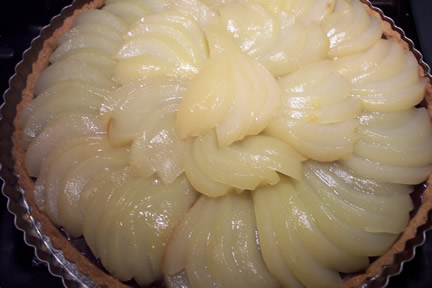
I returned from the office at about 1 the next afternoon, and after lunch spent a bit of time getting the prep “restaurant ready” so I could quickly assemble each course while having enough time to sit and eat as well. Scallops were cleaned (the little muscle on the side removed, which has the lovely texture of an eraser), Potatoes cooked, some for the crepe batter, some for the puree, batter made, puree as well, transferred to an ovenproof pot with a lid for a rechaud later on, 2 cups of demi measured out, the rest in the freezer, fennel shaved on the mandoline, scallions sliced, asparagus peeled and trimmed, oranges segmented and the juice squeezed out of the remaining flesh for the sabayon, a few baby carrots sliced on a bias to go with the beef, hot pot broth transfered to a pot for reheating, A nice bottle of red from the cellar (a 2001 Pichon Lalande, a gift from a wine dinner a few years earlier), almonds roasted and chopped, crepes cooked and stacked, and the remaining wine syrup reduced for use as a sauce. All was well.
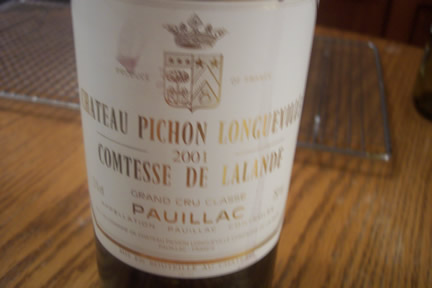
About 7, our guests arrived, and after a preliminary refreshment, we began to eat.
First course:
Hotpot broth at a simmer, I seared the scallops in a small amount of vegetable oil and a very hot pan, and gave them just a kiss of sea salt once flipped. A nest of fennel and scallions in the bottom of the bowl, surrounded by the scallops and the aromatic broth was a great way to start, with a crisp unoaked chardonnay.

Second:
Crepes brushed with creme fraiche and smoked salmon, then cut and rolled into little cones, a few each
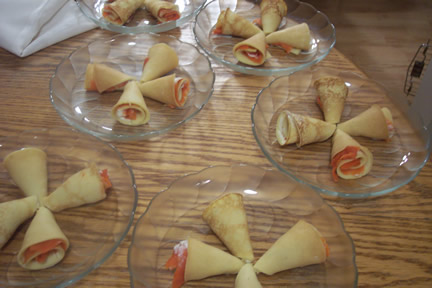
Third:
Orange juice and egg yolks whipped into a sabayon, with a bit of butter added to finish, then asparagus dropped into salted water for a quick cook. The combination of hot asparagus and rich but light sauce with fresh oranges and almonds was delicious!
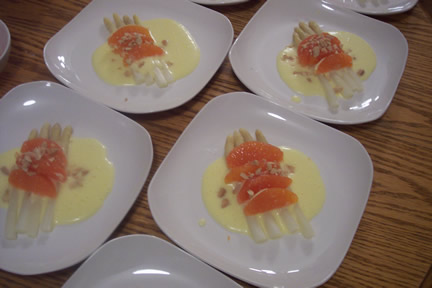
Fourth:
A cast iron pan heated to very hot, and a sear of the tenderloin before a spell in the oven to finish. while the beef cooked and rested, I had 10 minutes to saute the mushrooms, deglaze with sherry and demi, and adjust the seasoning, drop the carrots into the hot water I had used for the asparagus for a quick blanch. Delicious again, by which time we were getting quite full, so decided to take a break before dessert.
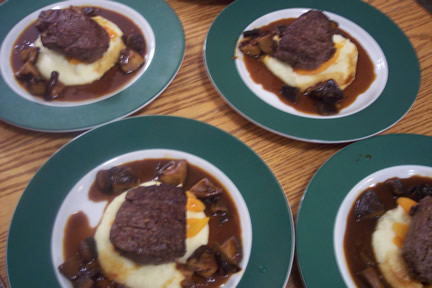
The kids had all made plans to go out, and by this time it was 10 or so, so off they went, leaving us to enjoy our dessert afterwards. The tart had set nicely, and proved to be a very nice combination indeed, and a great way to finish the meal.

A bottle of bubbly was popped at midnight, as per tradition, and the end of 2007 and the beginning of 2008 given a rightful toast. A very interesting year to say the least, but all’s well that ends well, and end well it did indeed!

